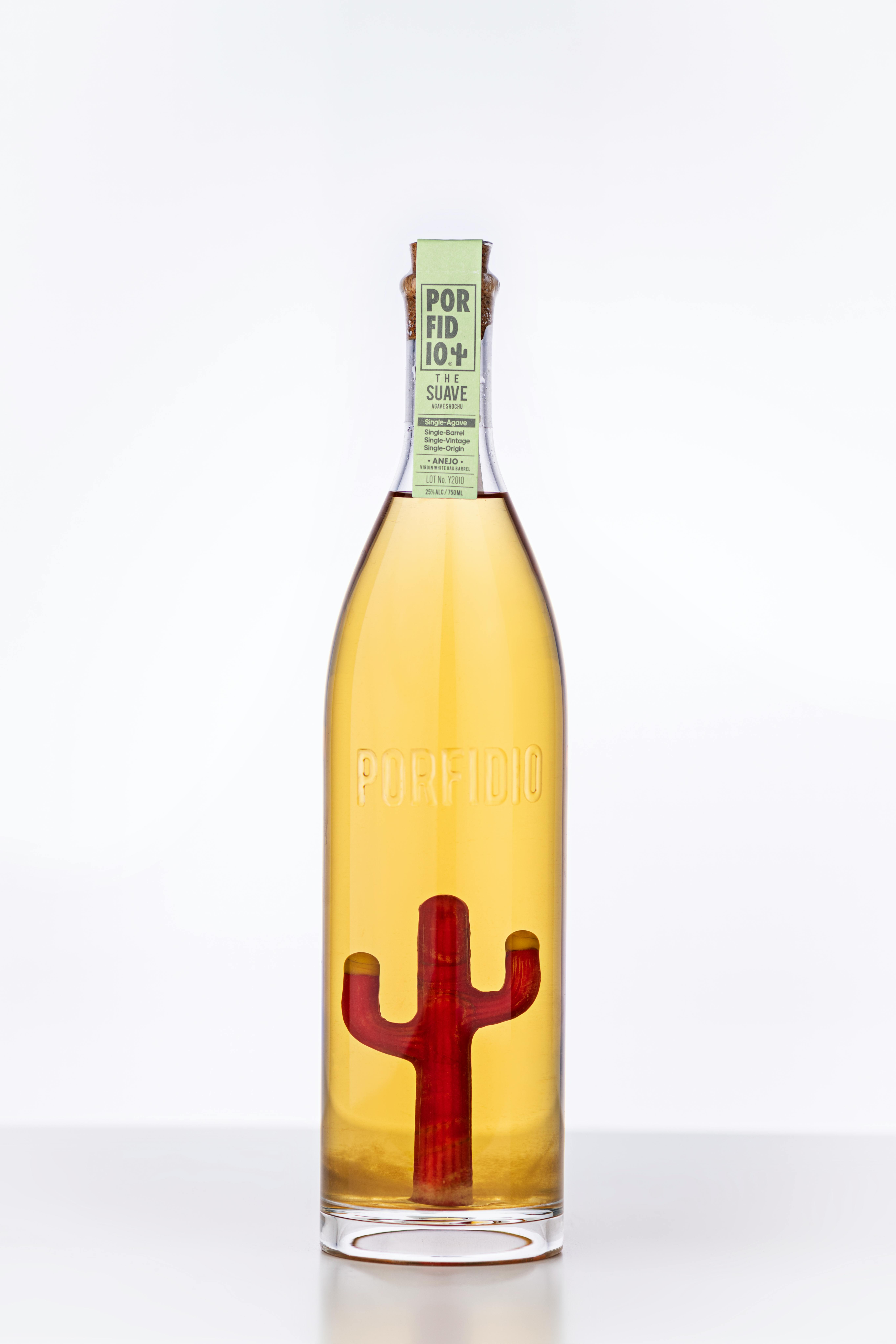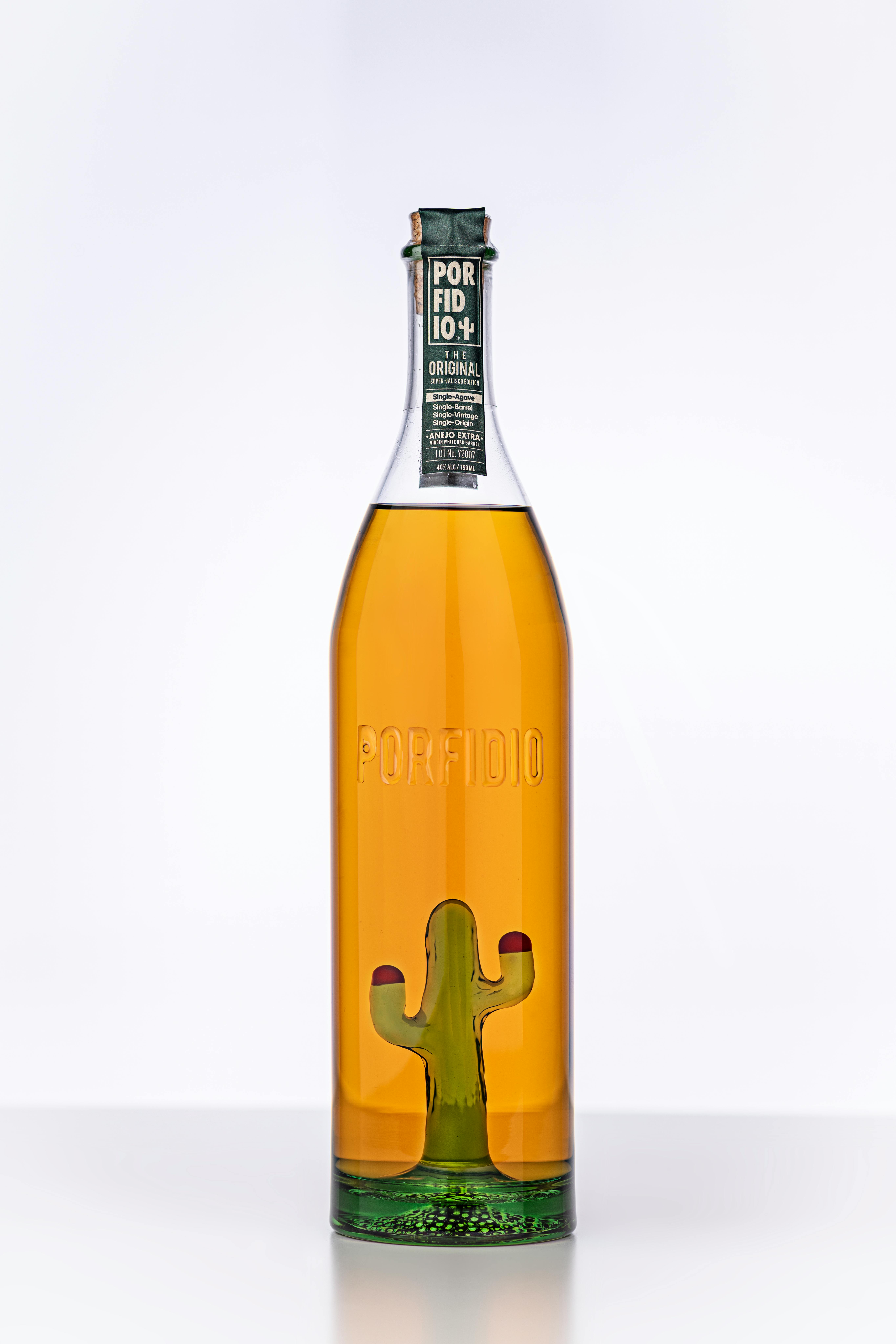Extra Añejo tequila is a type of tequila made from the fermented juice of the Blue Agave plant and aged for a minimum of three years. The agave is harvested, cooked, mashed, fermented and distilled to create this dignified spirit.
Extra Añejo tequilas are known for their complexity and smoothness. The aging process plays an integral role in creating this unique spirit, as the tequila rests in oak barrels for at least three years. During this time, the tequila develops its smooth flavors and aromas. After aging, it is then bottled and labeled with its age statement.Extra Añejo Tequila is a type of tequila that has been aged for at least three years in oak barrels. It is typically smoother and more complex in flavor than other types of tequila, and generally considered to be the highest quality. The aging process also gives Extra Añejo Tequila a darker color than other types.
Extra Añejo Tequila is usually made from 100 percent blue agave, and is bottled at or above 80 proof. Because of the long aging process, the cost of Extra Añejo Tequila can be higher than other forms of tequila.
Extra Añejo Tequila can be enjoyed neat or on the rocks, as well as being used for cocktails such as margaritas. Its unique flavor makes it ideal for sipping and savoring like a fine cognac or whiskey.
Contents
How Is Extra Añejo Tequila Made?
Extra Añejo Tequila is a specialty tequila that has been aged for at least three years in oak barrels. The aging process gives the tequila its distinct flavor and color. To make Extra Añejo Tequila, the agave plant is harvested, cooked, and crushed to extract the juices. The juice is then fermented and distilled before it is aged in oak barrels for at least three years. During this time, the tequila takes on some of the characteristics of the oak barrels, such as a golden color, mellow flavors, and a smooth finish. After aging, it is filtered and bottled for consumption. The final product is an exquisite and flavorful tequila that has been aged to perfection.
What Types of Tequilas Are Available?
Tequila is a popular spirit that has been enjoyed around the world for centuries. It is made from the blue agave plant and comes in a variety of styles and brands. The two main types of tequila are blanco and reposado, but there are several other types available. Blanco tequila is unaged and usually bottled or packaged immediately after distillation. It has a light, crisp flavor that makes it ideal for mixing in cocktails. Reposado tequila has been aged in wooden barrels for two months to one year, giving it a smoother, more complex flavor. Anejo tequila is aged for at least one year in small oak barrels and has an even richer flavor than reposado. Extra anejo tequila is aged for at least three years, resulting in an even deeper flavor profile with woody notes. Lastly, flavored tequilas come in a variety of flavors such as strawberry, lime, coconut, mango, and others. These can be enjoyed straight or used to create unique cocktails.
No matter what type of tequila you prefer, there are plenty of options available to choose from!
What Are the Differences Between Extra Añejo and Other Types of Tequilas?
Extra Añejo tequila is the highest quality of tequila, aged for a minimum of three years in oak barrels. This aging process gives Extra Añejo a smoother flavor than other types of tequila. It is also usually more expensive than other types due to the longer aging process and higher quality ingredients used in production.
In comparison to other types of tequila, such as Blanco or Reposado, Extra Añejo has a darker color and is much smoother on the palate. It also has a more complex flavor profile that includes notes of oak, caramel, vanilla, and spices like cinnamon or nutmeg. The aroma is often described as woody or fruity with hints of chocolate.
Extra Añejo has a longer finish than Blanco or Reposado and its full-bodied taste makes it perfect for sipping neat or on the rocks. While the other types are often used for cocktails like Margaritas or Palomas, Extra Añejo is best enjoyed by itself to appreciate its rich flavor profile.
Overall, Extra Añejo is a premium type of tequila that offers an unparalleled smoothness and complexity due to its lengthy aging process. The high-quality ingredients used in production make it an excellent choice for those looking for an exquisite tequila experience.
How Is Extra Añejo Tequila Distilled?
Extra Añejo tequila is a type of tequila that has been aged for at least three years in oak barrels. It is the highest quality and most expensive type of tequila, often costing more than twice as much as other varieties. The aging process gives the tequila a more intense flavor and a darker color. The distillation process for Extra Añejo Tequila is similar to other types of tequila, but it involves an additional step.
The process begins with the fermentation of agave, which produces the raw material for distillation. This fermented liquid is then distilled twice in copper pot stills to produce the final product. After this step, the Extra Añejo Tequila is aged for at least three years in oak barrels. The aging process gives it its unique flavor and color.
Finally, the Extra Añejo Tequila is filtered to remove any impurities before it is bottled and sold. This extra step ensures that only the best quality tequilas are available on store shelves. The result is a smooth, flavorful spirit that has been carefully crafted by experts who understand the complexities of distilling and aging tequilas.
Extra Añejo Tequilas are known for their intense flavor and smooth finish, making them popular among connoisseurs and casual drinkers alike. They are also highly sought after by mixologists who want to create unique cocktails with a luxurious edge. With its complex flavor profile and high price point, Extra Añejo Tequila can be an excellent choice for those looking for something special in their spirit selection.

Ingredients Used to Make Extra Añejo Tequila
Extra Añejo tequila is made from the same ingredients as other types of tequila. The primary ingredient used to make Extra Añejo tequila is Blue Agave, a plant native to Mexico. Blue Agave is harvested and the piña, or heart of the plant, is extracted and then processed into a sweet syrup or juice. Other ingredients used in the production of Extra Añejo tequila include yeast, water, and oak casks for aging.
The key factor that sets Extra Añejo tequila apart from other types of tequila is its extended aging process. The agave syrup or juice is fermented with yeast to create a low alcohol content liquid known as mosto. This mosto is then distilled up to three times in copper pot stills before it is aged for at least three years in oak barrels. While aging, the liquid slowly takes on the flavor and color characteristics of the oak casks imparting a smooth and complex flavor profile to the finished product.
The aging process not only gives Extra Añejo tequila its unique flavor profile but also contributes to its higher price tag. As with any aged spirit, time spent aging equals money spent on production costs making this type of tequila more expensive than other varieties. However, many connoisseurs feel that it’s well worth the cost given its smooth flavor characteristics and complexity of taste that can only be achieved with extended aging.
To sum up, Extra Añejo tequila has three main ingredients: Blue Agave, yeast, and water; plus oak casks for aging. This type of tequila requires an extended aging period that imparts a unique flavor profile and complexity through its contact with oak casks making it more costly than other types of tequilas.
Extra Añejo Tequila
Extra añejo tequila is a premium tequila aged for at least three years in oak barrels. This type of tequila is often referred to as the “extra aged” or “ultra aged” variety. It has a distinct flavor profile and can be enjoyed neat, on the rocks, or mixed in cocktails. In order to be classified as extra añejo, tequila must meet several standards set by the Consejo Regulador del Tequila (CRT), the governing body for tequila production in Mexico.
Extra añejo tequilas must be aged for at least three years in oak barrels. The barrels used for aging must have no more than 600 liters capacity and must be made from white oak that has been charred on the inside. The aging process must take place in Mexico, and the barrels must be stored under strict temperature and humidity control guidelines set by the CRT.
In addition to these standards, extra añejo tequilas are also subject to testing to make sure they meet certain quality criteria. The CRT requires all extra añejo tequilas to pass an organoleptic test, which examines taste, smell, color, and other characteristics of the finished product. All extra añejos must also pass chemical tests designed to ensure that they contain no additives or artificial ingredients.
Finally, all extra añejos must carry an official seal from the CRT on their label as an assurance of their authenticity and quality. This seal is issued only after all of the aforementioned standards have been met and tests have been passed with satisfactory results. Extra añejos that do not comply with these standards cannot legally be labeled or sold as such in Mexico or abroad.
Authenticating Extra Añejo Tequila
Extra Añejo Tequila is a special, high-quality spirit that has undergone an additional aging process of three years or more. To ensure that you’re getting the best possible product, it’s important to verify the authenticity of the bottle you’re purchasing. Here are a few tips to help you determine if your Extra Añejo Tequila is genuine:
1. Check for Authentic Labels: Authentic Extra Añejo Tequila should bear the official seal of Mexico’s Consejo Regulador del Tequila (CRT). The label should also contain other important information, such as place of origin and ingredients used in production.
2. Look for Reputable Producers: When it comes to purchasing Extra Añejo Tequila, it’s best to stick with well-known, reputable producers. These producers have invested in their products and will provide the highest quality tequilas available.
3. Inspect the Bottle: Take a close look at the bottle itself – look for any signs of wear or damage, such as scratches or dents. Also check for any signs of tampering or refilling, such as changed seals or labels.
4. Check the Color: Authentic Extra Añejo Tequila should have a deep amber color due to its extended aging process. Any discoloration could be an indicator that your bottle is not genuine.
5. Smell & Taste: Take your time and experience all of the nuances of your Extra Añejo Tequila – smell it first and then take a small sip. Good quality tequilas will have subtle aromas and flavors that will linger on your palate.
By following these steps, you can be sure that your Extra Añejo Tequila is authentic and will provide you with an enjoyable drinking experience.

Conclusion
Extra Añejo tequila is a unique type of tequila that is aged for 3 years or more in oak barrels. The aging process creates a smooth, mellow flavor that is enjoyed by many. It must be made from 100% blue agave and must meet the minimum aging requirement of three years. The aging process also gives the tequila its unique amber color. Extra Añejo tequila is a special type of tequila and should be enjoyed responsibly.
Extra Añejo tequila has become increasingly popular in recent years, due to its smoothness and complexity. Its long aging process results in a distinct flavor profile, making it an ideal choice for sipping and mixing with other ingredients to create cocktails. For those looking for a special tequila experience, Extra Añejo may just be the perfect choice!
0 Comments